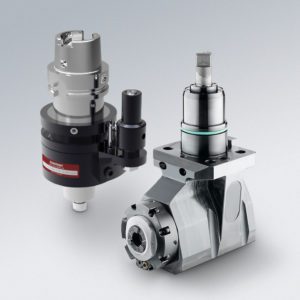Contact us today:

(847) 934-4500
tdaro@bernardandcompany.com

Contact us today:
(847) 934-4500
tdaro@bernardandcompany.com

By Preben Hansen, President, Platinum Tooling

With today’s machining practices, many applications dictate the use of smaller cutting tools running at high rpm and high feed rates. The increased rpm helps to optimize the results of the cutting tools and final product. Those required rpm’s are not always available in the machine spindle or turret. Additionally, when running the machine at its maximum capacity, premature wear can occur or thermal growth may result causing “out of tolerance” workpieces.
Machine tool builders produce machines for the broadest audience and that does not always take into consideration high-speed applications. In light of this, there is a large variety of speeders available to complement the wide range of machines in the market.
Depending upon your machining center application needs, one can choose from air driven, geared or motor speeders. For the highest rpm requirements, air speeders are available that can run up to 80,000 rpm continuously. They are best suited for very small diameter milling, drilling and engraving, in particular, when long duty cycles are involved. Geared speeders are available in a wide range of sizes from ER 11, with 1:8 gear ratio, that can run at 50,000 rpm. In addition, large 50 taper output tools can achieve 4,000 rpm with 50 hp. These are the extreme cases, but many other tool options exist for mid-range applications.

Turning centers face similar challenges but, in these cases, it is not the main spindle that requires additional rpm but rather the turret tooling. Live tool speeders are available for the most popular machine brands with gear ratios from 1:2 up to 1:4 with a maximum rpm of 48,000. Speeders can be supplied in a variety of styles including straight, 90 degree, and universal adjustable. Live tool speeders are also offered on the market today with internal coolant capabilities when there is a requirement for a coolant-through cutting tool.
Undoubtedly, these invaluable tools for high-speed applications will continue to gain popularity in the manufacturing world, offering increased productivity regardless of the size and shape of the machine tool.
For more information, please contact the author:
Preben Hansen, President
PLATINUM TOOLING
16 East Piper Lane
Suite 128
Prospect Heights, IL 60070
Phone: 847-749-0633
www.platinumtooling.com